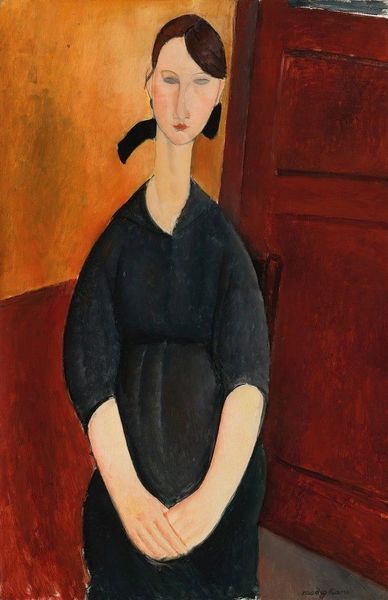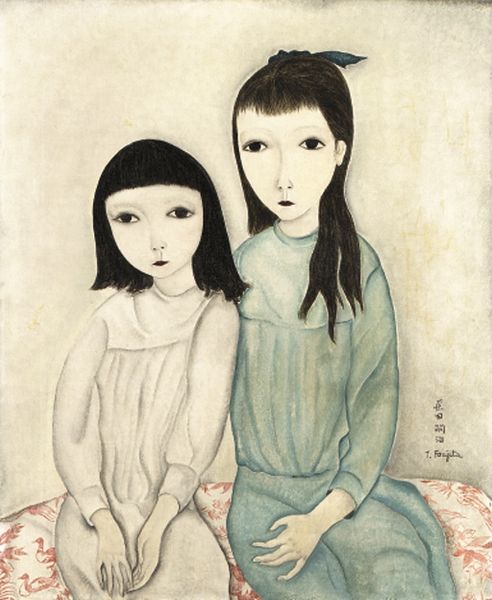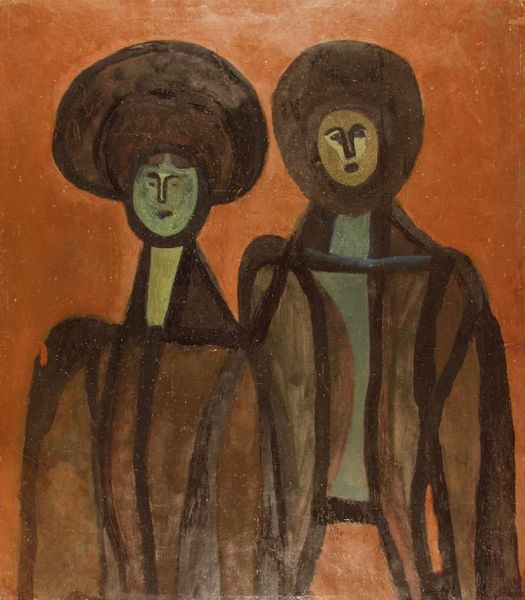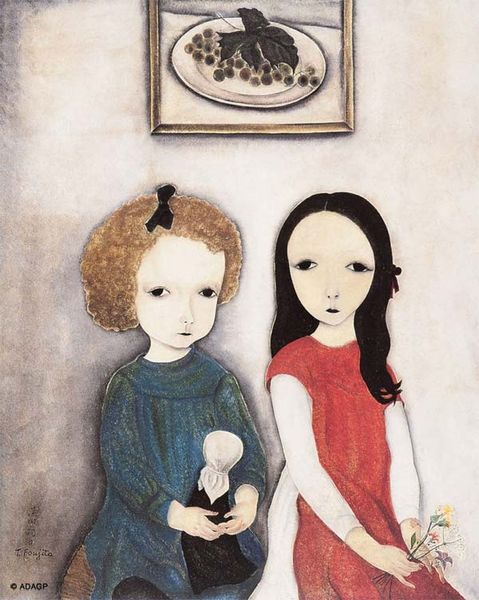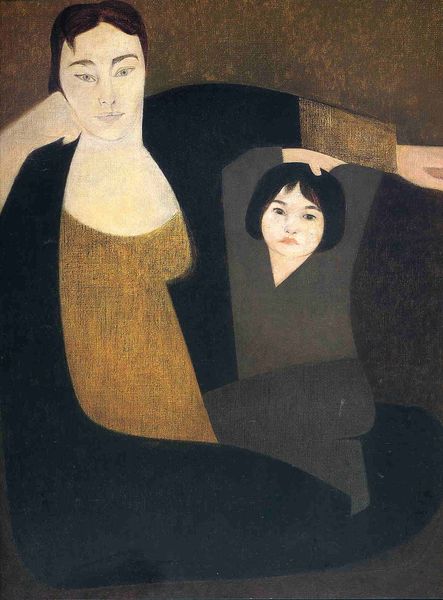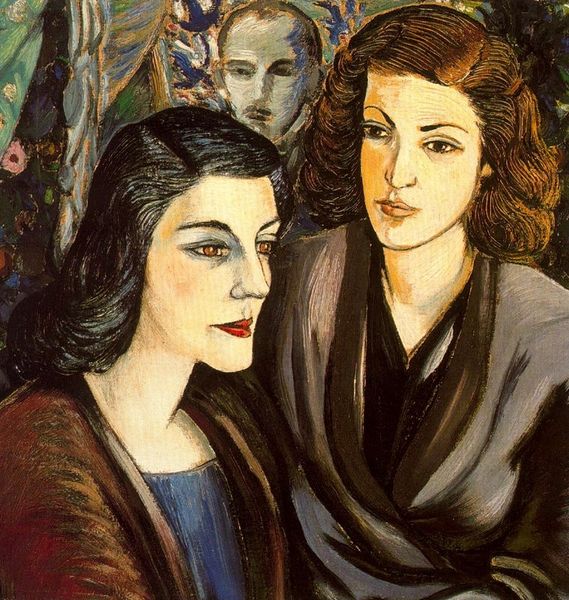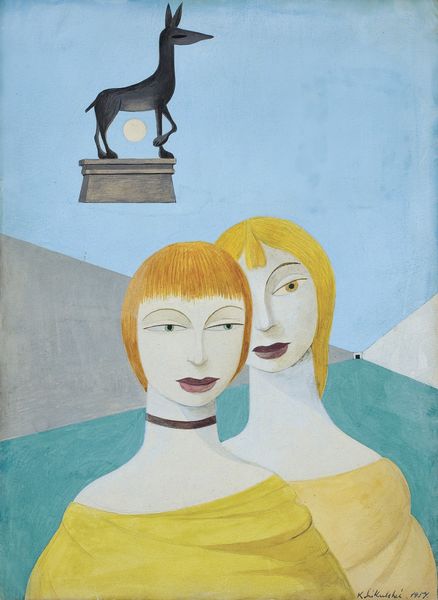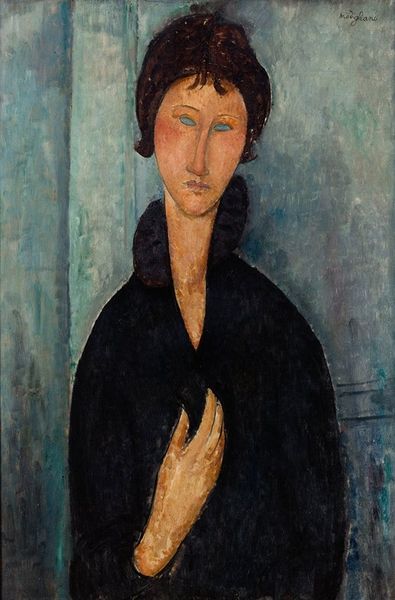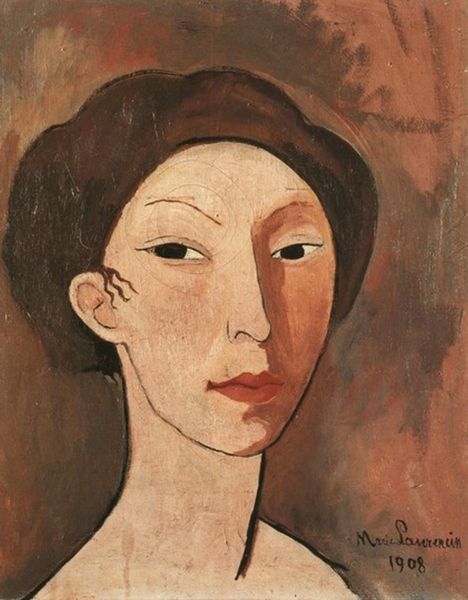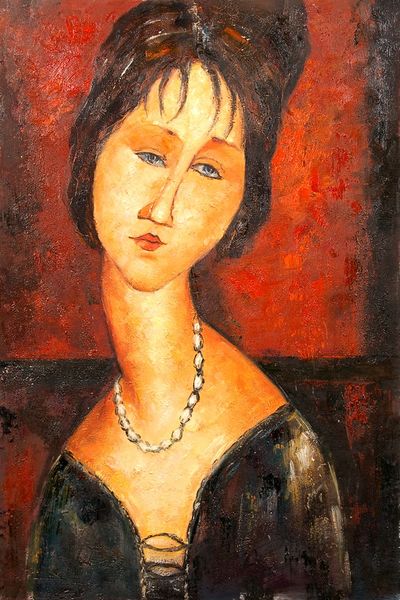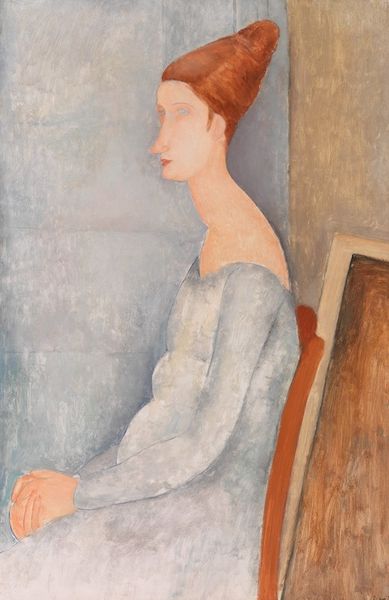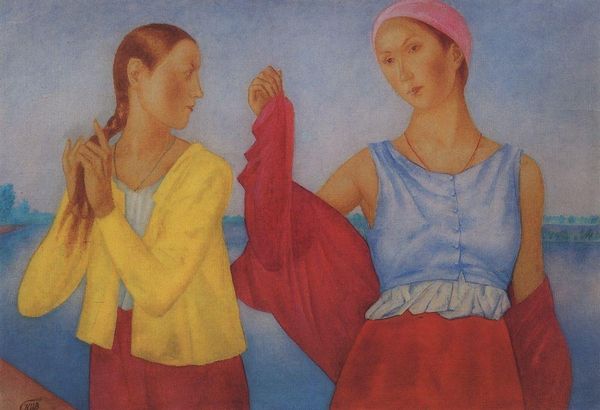
painting, oil-paint
#
portrait
#
painting
#
oil-paint
#
figuration
#
oil painting
#
intimism
#
expressionism
#
modernism
Copyright: Public domain US
Curator: Tsuguharu Foujita’s oil painting "Two Women," completed in 1918, presents an intriguing composition. What strikes you initially about it? Editor: There's a profound melancholy. The paleness of their skin, the subdued ochre tones of their dresses against that washed-out background...it all speaks of quiet resignation, or perhaps quiet defiance. Curator: Foujita was working in Paris during the First World War. His proximity to avant-garde circles certainly influenced his evolving artistic vision. He experienced first-hand the influx of new ideas circulating within Montparnasse's burgeoning art scene. Editor: And did these women represent a particular class? Or perhaps stand as commentary on wartime austerity? Their somber mood, the flower pinned on the left figure’s dress – is it an act of defiance? Does this offer us a glimpse into the socio-political atmosphere of the time? Curator: Perhaps, but let's consider also that Foujita incorporated very distinctive Japanese aesthetic elements with western modernism. Notice, for example, their elongated features and graceful poses. These are clear references to traditional Japanese portraiture. And then their placement suggests intimacy; they share a single red seat, yet don't quite make eye contact. Editor: That very sense of isolation amid connection is palpable. This piece engages themes of intimacy and alienation, reflecting the complex dynamics between women navigating societal expectations and personal desires during a pivotal era. One almost feels an encroaching sense of voyeurism looking at them in such an exposed space. Curator: Yes, by embedding this intimacy, Foujita offers the audience not only aesthetic pleasure but an intimate insight into a shared quiet moment of existence, which serves as a reminder of the intricate relationship between private emotions and the broad public impact of events. Editor: "Two Women" transcends a mere double portrait. It becomes a cultural artifact, reflecting not only the artist’s identity but the profound intersectionality of the world at that time. Curator: Indeed, and looking at the historical record alongside these aesthetic dimensions offers valuable insight to understanding the development of art itself during such transformative years.
Comments
No comments
Be the first to comment and join the conversation on the ultimate creative platform.

